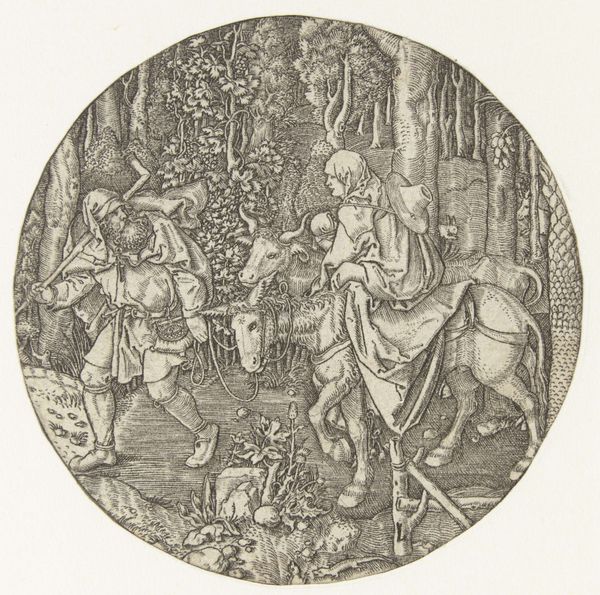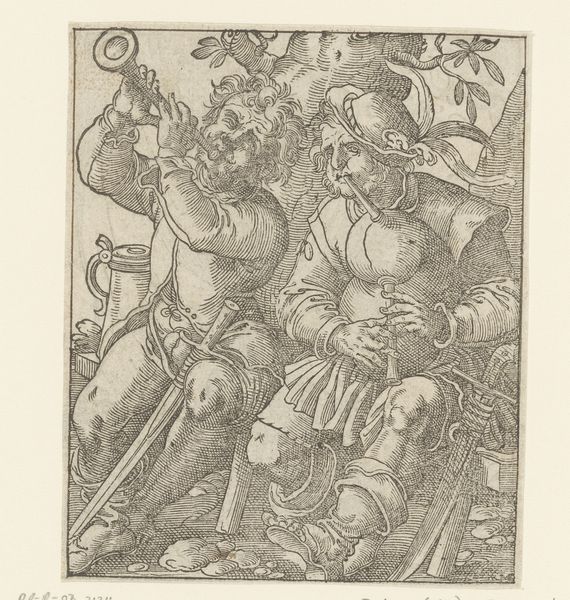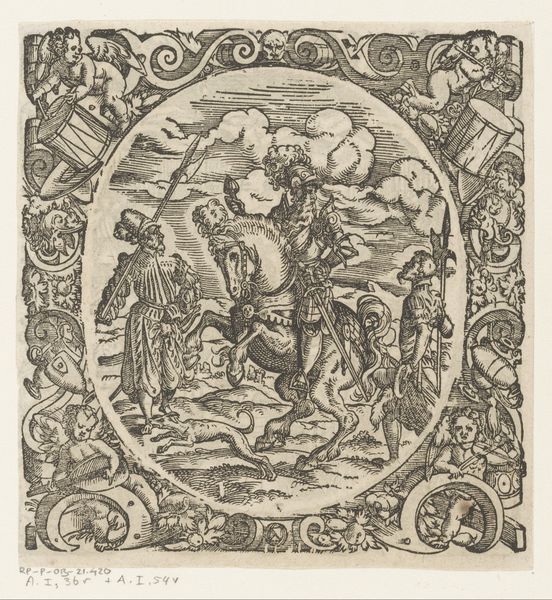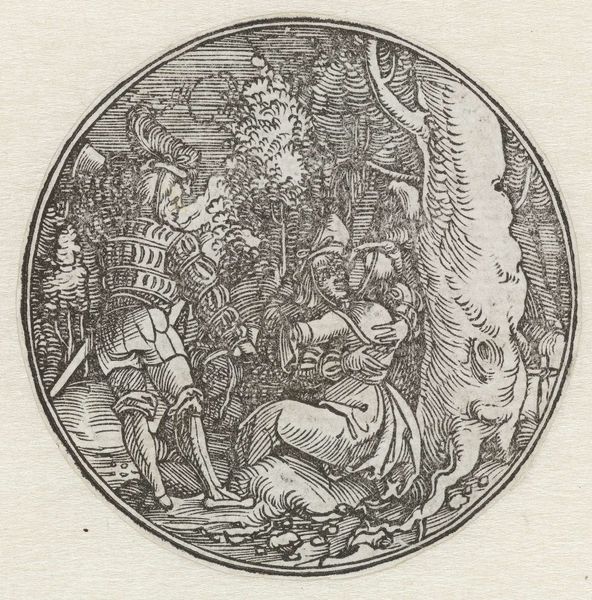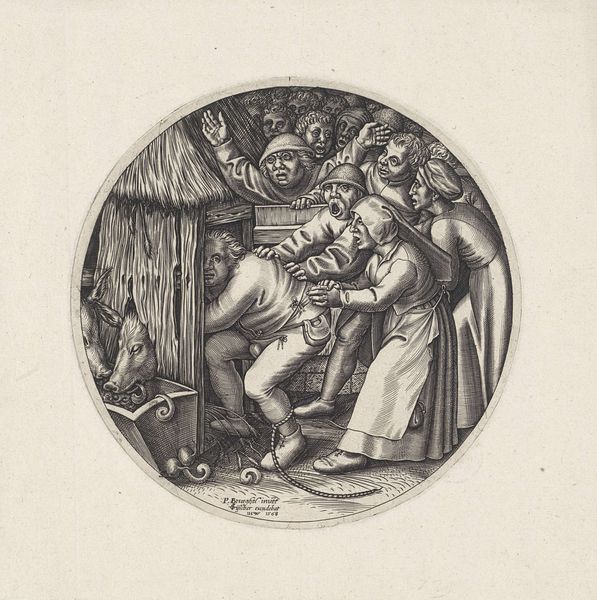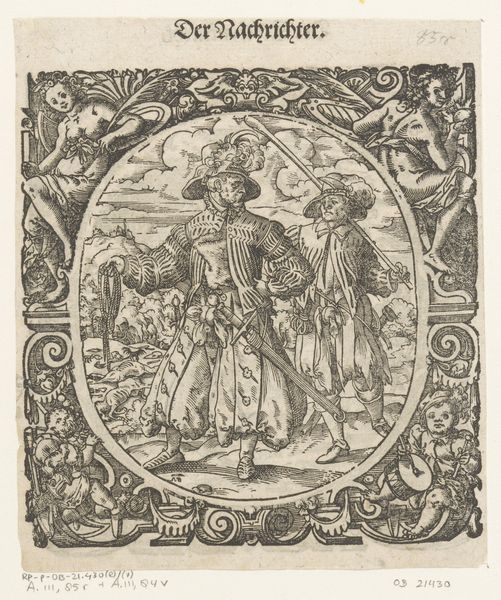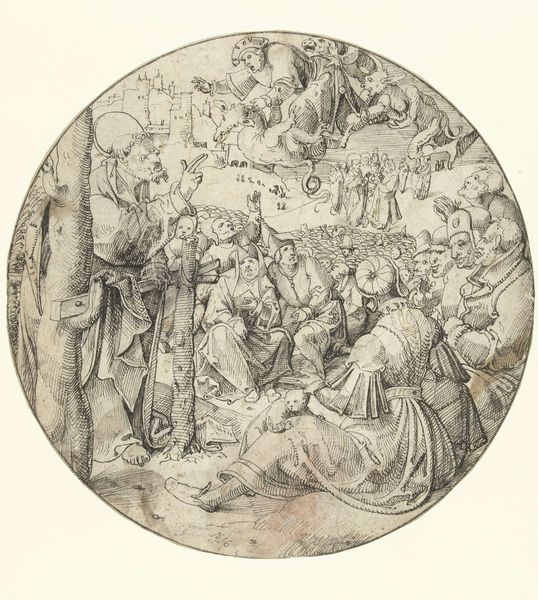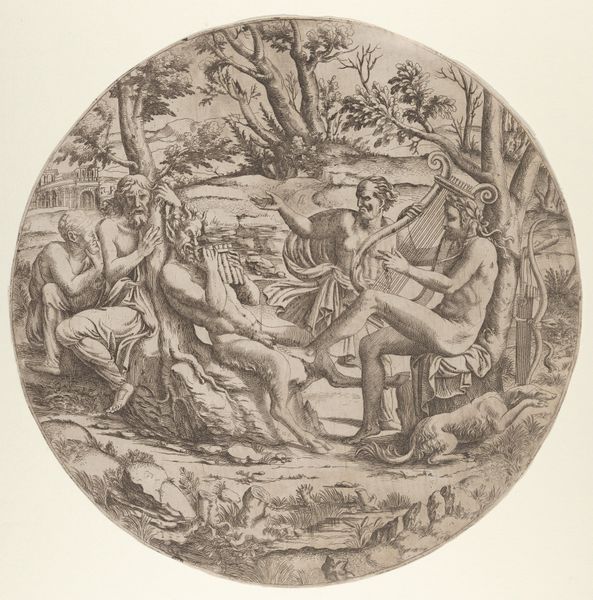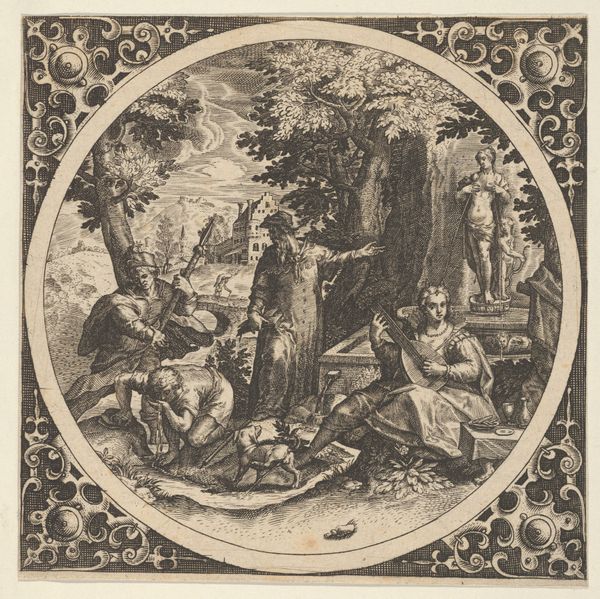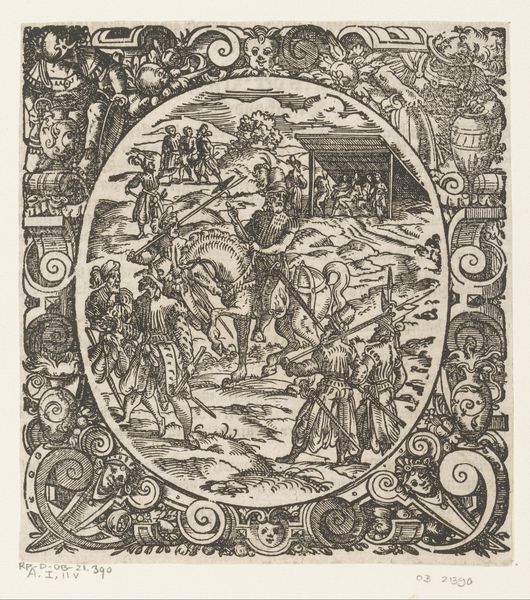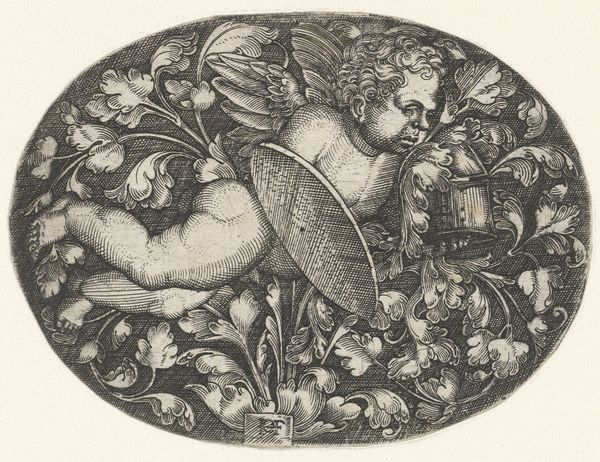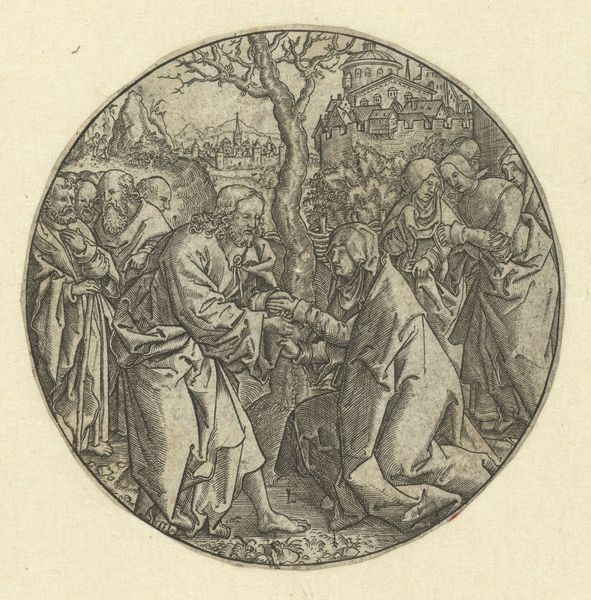
engraving
#
pen drawing
#
figuration
#
line
#
history-painting
#
italian-renaissance
#
engraving
Copyright: Rijks Museum: Open Domain
Curator: Here we have an engraving titled “David en Goliath.” The piece is attributed to Monogrammist AC and thought to have been created sometime between 1520 and 1562. It resides here at the Rijksmuseum. Editor: Immediately, I’m struck by the contrast between the delicate, almost ornamental rendering of the figures and the violent scene they depict. It's chaotic but refined, a miniature world of brutality. Curator: Absolutely. The symbolism here is rich, particularly given the enduring resonance of the David and Goliath narrative. Goliath, representing overwhelming force and perceived invincibility, embodies tyranny. David, though physically smaller, embodies courage, faith, and righteousness in challenging oppression. Editor: Right, and thinking about the era, consider how potent this visual shorthand would have been during a period of religious and political upheaval. David wasn't just a Biblical hero; he was an aspirational figure for the oppressed, a reminder that seemingly insurmountable power can be overcome with courage. What I'm curious about, symbolically, is what's with those cherubic figures around him, are they mocking Goliath's loss of virility and power? Curator: They represent victory but in the context of a new belief, offering musical praises. Their presence reframes David’s triumph as a manifestation of divine favor but maybe also offering the reminder that even Goliath’s great power ultimately derives from an even higher source of power. Editor: This is an amazing illustration of how artistic production echoes, amplifies, or even complicates power struggles. What does Renaissance visual rhetoric suggest, in your view, for understanding current anti-colonialist deconstructions? Curator: In our time, "David and Goliath" morphs into an intersectional struggle that reminds viewers to see symbols, especially those handed down across traditions, as multi-valent, echoing differently at different moments in our long human fight. Editor: That’s an excellent perspective. These centuries-old symbols clearly continue to serve as an armature for understanding and shaping contemporary resistance movements. Curator: Thank you. Examining this print reveals its continued vitality. It is more than an engraving, its a dialogue across time.
Comments
No comments
Be the first to comment and join the conversation on the ultimate creative platform.
